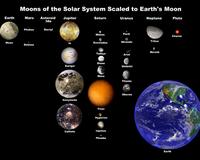
IN 10,000 years, the earth’s population has doubled ten times, from less than 10m to more than six billion now and ten billion soon. Most of the calories that made that increase possible have come from three plants: maize, rice and wheat. The oldest, most widespread and until recently biggest of the three crops is wheat.
It is derived from three wild ancestral species in two separate mergers. The first took place in the Levant 10,000 years ago, the second near the Caspian Sea 2,000 years later. The result was a plant with extra-large seeds incapable of dispersal in the wild, dependent entirely on people to sow them.
People in what is now Syria had been subsisting happily on a diet of acorns, gazelles and grass seeds. The centuries of drought drove them to depend increasingly on wild grass seeds. Abruptly, soon after 11,000 years ago, they began to cultivate rye and chickpeas, then einkorn and emmer, two ancestors of wheat, and later barley. Soon cultivated grain was their staple food. It happened first in the Karacadag Mountains in south-eastern Turkey-it is only here that wild einkorn grass contains the identical genetic fingerprint of modern domesticated wheat.
On General Douglas MacArthur’s team in Japan at the end of the second world war a wheat expert named Cecil Salmon collected 16 varieties of wheat including one called “Norin 10”, which grew just two feet tall, instead of the usual four. Salmon sent it back to a scientist named Orville Vogel in Oregon in 1949. Vogel began crossing Norin 10 with other wheats to make new short-strawed varieties.
In 1952 news of Vogel’s wheat filtered down to a remote research station in Mexico, where a man named Norman Borlaug was breeding fungus-resistant wheat for a project funded by the Rockefeller Foundation. Borlaug took some Norin, and Norin-Brevor hybrid, seeds to Mexico and began to grow new crosses. Within a few short years he had produced wheat that yielded three times as much as before.


